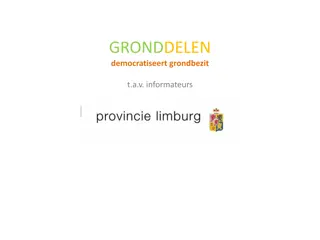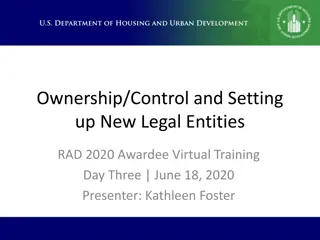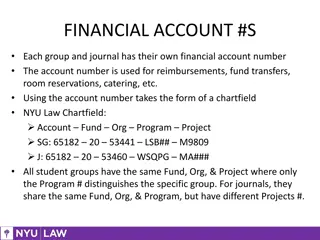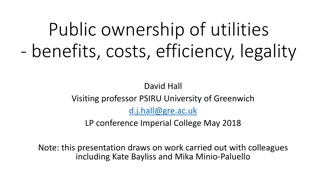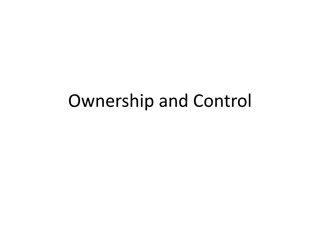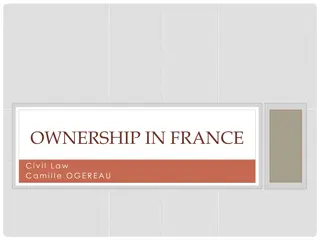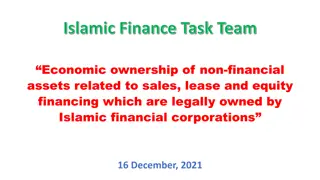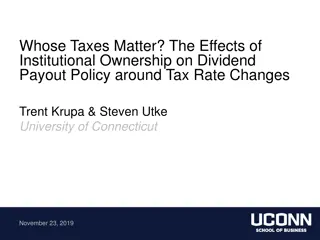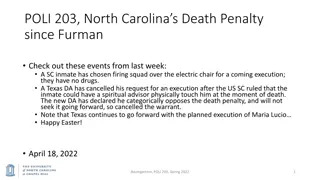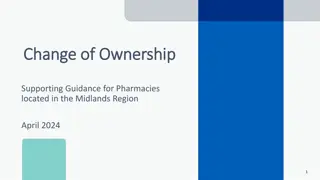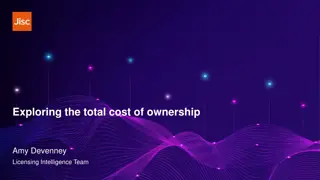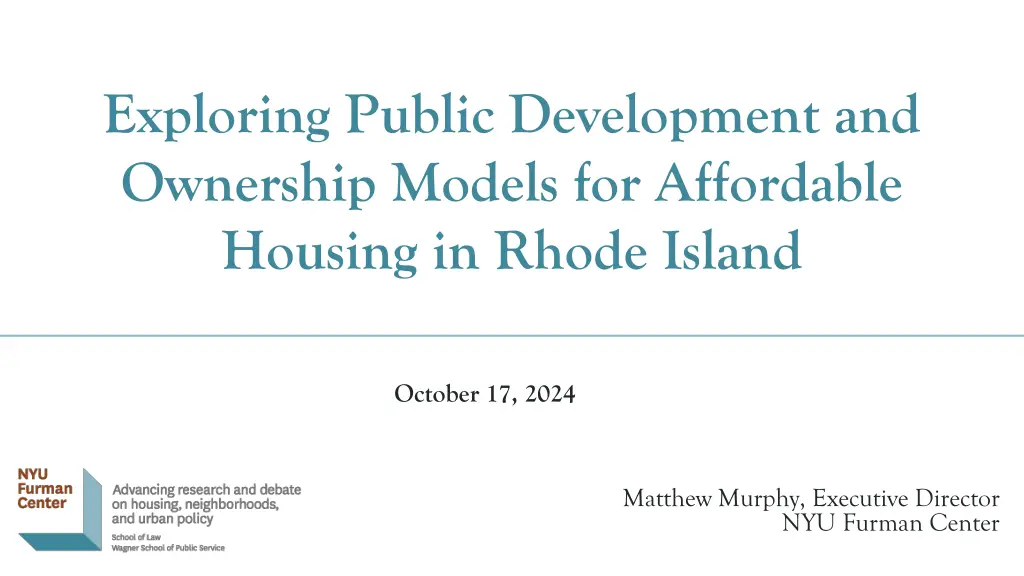
Exploring Public Development and Ownership Models for Affordable Housing in Rhode Island
Explore the feasibility of public development and ownership models for addressing the affordable housing shortage in Rhode Island. Key findings reveal promising models but also challenges like high costs and political considerations. Learn about government involvement, long-term ownership, and the unique housing context in Rhode Island.
Download Presentation

Please find below an Image/Link to download the presentation.
The content on the website is provided AS IS for your information and personal use only. It may not be sold, licensed, or shared on other websites without obtaining consent from the author. If you encounter any issues during the download, it is possible that the publisher has removed the file from their server.
You are allowed to download the files provided on this website for personal or commercial use, subject to the condition that they are used lawfully. All files are the property of their respective owners.
The content on the website is provided AS IS for your information and personal use only. It may not be sold, licensed, or shared on other websites without obtaining consent from the author.
E N D
Presentation Transcript
Exploring Public Development and Ownership Models for Affordable Housing in Rhode Island October 17, 2024 Matthew Murphy, Executive Director NYU Furman Center 1
Introduction, Purpose, and Broad Findings Rhode Island's Housing Challenge: Not unlike other places across the U.S., there is a severe shortage of affordable housing. Study Focus: Explore feasibility of public development and ownership models. Key Findings: Models show promise but face challenges like high costs, political considerations, and long-term sustainability. Much can be learned from each model, but each model s success will be highly contingent on local market dynamics and capacity. 2
Defining Public Development and Ownership Government as Developer: Local or state government entities act directly as real estate developers or engage closely with development partners through partnerships or development agreements. The ultimate goal is to ensure some degree of public ownership in the project. Financial Investment and Active Role: These government entities invest significant financial resources in exchange for an active role in the decision-making process during development and the ongoing management of housing, going beyond basic regulatory oversight. This includes retaining a full or partial ownership stake in the properties. Long-Term Ownership and Oversight: The government retains long-term ownership of the housing or the land on which it is built, maintaining continuous public control and oversight over the properties. 3
Rhode Island Housing Context Ranks near bottom of U.S. states in terms of per capita housing production High construction costs, low rents outside key areas Relatively limited supply of publicly-owned land 4
Overview of Domestic Models Three Key Categories: Mixed-Income Housing (Group A): Combines affordable and market-rate units. Public Housing Conversions (Group B): Leverages existing public housing for new development. 100% Affordable Housing (Group C): No market-rate units, long-term affordability. 6
U.S. Models Examined Group A: Mixed-Income Housing Montgomery County, MD Housing Production Fund Atlanta, GA Atlanta Urban Development Corporation (AUD) Chicago, IL Green Social Housing Revolving Fund Colorado Affordable Housing Financing Fund Group B: Public Housing Conversions Boston, MA Boston Housing Authority (Faircloth-to-RAD) Cambridge, MA Cambridge Housing Authority Hawaii Hawaii Public Housing Authority The Laureate, Rockville, MD. Source: Apartments.com Group C: 100% Affordable Housing Dakota County, MN Dakota County Community Development Agency (CDA) Idaho The Housing Company (THC) 7
Group A Models: Key Features Public Investment: Public funds replace private equity to finance mixed-income developments. Revolving Loan Funds: Publicly capitalized funds, raised through bond proceeds, provide relatively low-cost, short-term loans that are repaid and reinvested. Public Ownership Stake: Government secures some degree of ownership/control, influencing development decisions. Cross-Subsidization: Market-rate units help subsidize affordable units, balancing financial viability with affordability. Additional Public Funding: Supported by tax exemptions, bond financing, and other public financing tools. Targeted for Higher Cost Areas: Large-scale projects aimed at increasing housing access in high cost locations. 8
Group B Models: Key Features Public Housing Redevelopment: Redevelop and expand existing public housing units. Faircloth-to-RAD Conversions: Use Rental Assistance Demonstration (RAD) to convert units to Section 8 housing, with a focus on achieving deeper affordability. PHAs as Developers: Public Housing Authorities lead development and manage projects. Focus on Deep Affordability: Prioritize housing for extremely low-income households. Public Financing Tools: Supplement RAD with LIHTC and other public funding. Development Expertise Needed: PHAs require strong in-house development and management capacity. 9
Group C Models: Key Features Fully Affordable: No market-rate units. Public or Quasi-Public Ownership: Managed by public or quasi-public entities. Lower Construction Costs: Focus on essential features to maximize affordability. Long-Term Sustainability: Pooled revenues for maintenance and repairs. Dedicated Public Funding: Funded by public tax levies or bonds. Smaller, Community-Oriented Projects: More politically palatable. Complement Existing Nonprofits: Works alongside nonprofit efforts. 10
Lessons from International Models Cost-Based Rents: Countries like Vienna and Helsinki set rents based on the cost of construction and operation. Tenant based subsidies are also used in targeted ways. Public Land Use: Singapore and Hong Kong effectively utilize public land for housing Nonprofit Partnerships: In cities like Copenhagen and Vienna, strong partnerships with nonprofits help drive affordable housing development. Long-Term Affordability: Many international models focus on ensuring permanent affordability by keeping housing in public or nonprofit ownership in perpetuity. 11
Summarizing the Domestic Tools Used Revolving Loan Funds: Low-interest, reusable construction loans. Tax-Exempt Bond Recycling: Reuse bonds to finance new projects. FHA/FFB Risk-Share Loans: Lower-cost loans with shared risk with federal government. Property Tax Abatements: Reduce property taxes to lower costs. Faircloth-to-RAD: Convert units to Section 8 with deeper subsidies. Inclusionary Zoning: Increased density for affordable housing. Self-Insurance Programs: Reduce insurance costs. Public Land: Use public land to lower acquisition costs. Auburn Court, Cambridge, MA. Source: Chris Moyer via Places Journal 12
Navigating Risks in Publicly Led Development Development Uncertainty: Potential for cost overruns, market fluctuations, and unmet rent projections. Political Factors: Changes in priorities may impact project timelines. Administrative Complexity: Extended timelines and costs due to regulatory processes. Financial Considerations: Long-term planning needed for development costs, operating expenses, and maintenance. Community Considerations: Potential for local opposition and zoning challenges. Management Requirements: Effective long-term property management is essential. 13
Recommendations for Rhode Island Create a publicly capitalized revolving fund to finance affordable housing, with a focus on mixed-income or 100% affordable multifamily projects. Start small by addressing specific housing needs where a public developer has a distinct advantage, such as using publicly-owned land or rehabilitating distressed properties. Establish dedicated funding streams, exploring property tax levies or income tax levies to create steady support for housing development. Reform the 8% tax to offer deeper exemptions for projects that provide a higher share of affordable units or more deeply affordable units. Maximize the use of existing programs like LIHTC, FHA/FFB risk-share loans, and HUD s RAD program to finance affordable developments. 14
Recommendations for Rhode Island Continued Increase the allocation of private activity bonds to multifamily housing development to better support affordable housing. Create a technical assistance network to help PHAs access financing, development support, and regulatory navigation. Continue providing grants to PHAs for pre-development activities such as site selection, financial planning, and regulatory approvals. Promote zoning changes that allow for higher-density development and require permanent affordability through inclusionary zoning. Conduct a statewide inventory of public land and create guidelines for repositioning it for affordable multifamily housing. Convene a working group to explore solutions to rising insurance costs, including self-insurance options for multifamily housing developments. 15
Thank You Matthew Murphy, Executive Director NYU Furman Center matthew.murphy@nyu.edu 16


